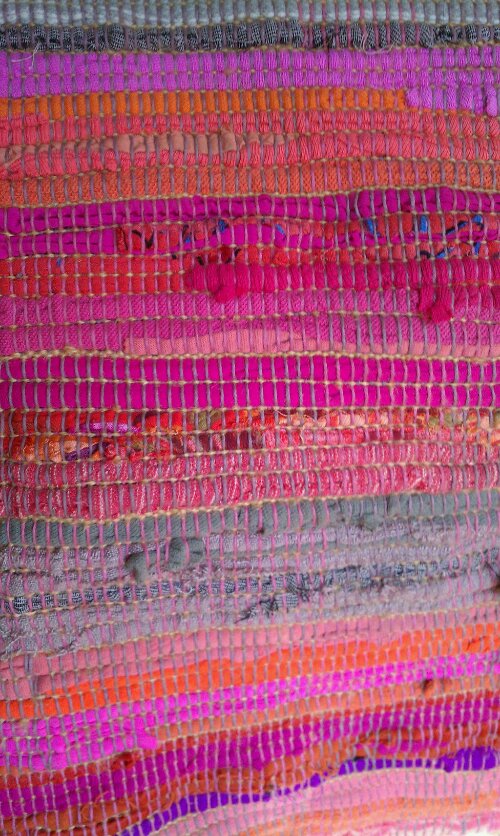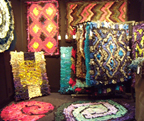
Darn. I was pretty absolutely certain I didn’t like warp-faced rugs. I undertook to weave on in my first handweaving class, taught by Jean Vollrath of Hickory Mountain Weavery at the NC Arts Incubator in Siler City, because I didn’t want to cause trouble in a class full of beginners. If everyone else learned the log cabin pattern, I could too.
As it turns out, the warp colors I selected don’t have enough contrast for the log cabin pattern to show up. You can almost barely notice that the pink shifts to taupe and then back again. I know the warp changes color, and I can barely see the color change.
The weft (crossways stripes) is fabric leftover from the Pink Floating Square rug I knitted recently, that sold its first time out. I liked the colors. I was amazed at how well the gradations show up in the Log Cabin rug. I didn’t notice them as clearly as I was weaving the rug, because once you advance the warp, the completed part of the rug is hidden underneath the part you’re still working on. It was only when I cut the finished rug off the loom at the end of the class that I realized how cool it looked. I’ll post a “formal” picture next time I set up for detailed photography.
But what does this have to do with needing a second loom? My main loom is set up to produce weft-faced rugs in twill and broken twill. The two types of rugs–warp-faced and weft-faced–cannot be produced on the same loom interchangeably. I have a 100-yard warp on my (first) Newcomb Studio. I rather suspected I might need / want a second loom, but I thought that the variable would be weaving width, not sett.
As always, stay tuned.


[…] rear of the loom. This warp is only four yards long–all I had left on the cones after the first Log Cabin Rug class project–and a sectional beam, which can hold 100 yards, is overkill. However, overkill is what I […]